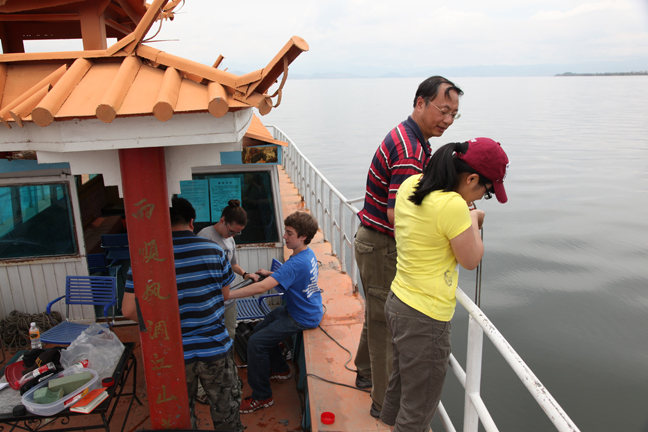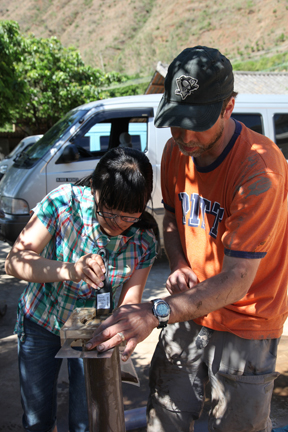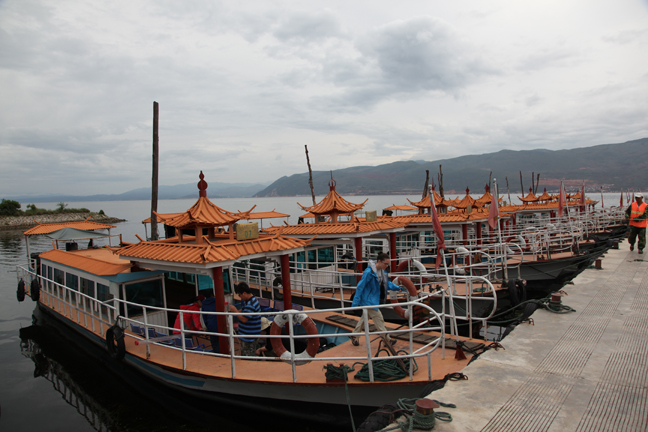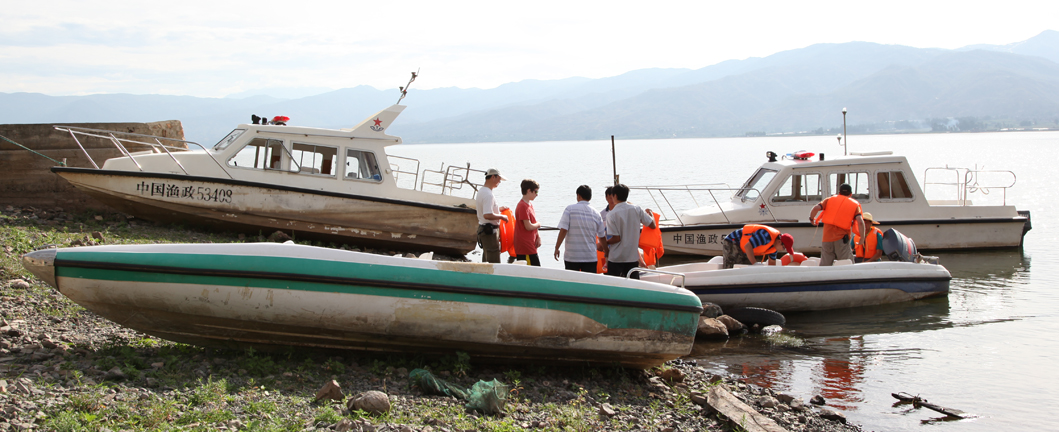 |
||||||||||||||
|
|
||||||||||||||
|
Yunnan China
|
|
Quantifying Long-Term Human Impacts to the Landscape using Soils and Sediments on the Yunnan Plateau of Southwestern China - Collaborators include JunQing Yu, Aubrey Hillman, Dan Bain, TzeHuey Chiou-Peng, Alice Yao, Byron Steinman, and Colin Cooke among others Human activities including agriculture (e.g. irrigation, drainage, terracing), metallurgy (e.g. mining, processing, smelting), and deforestation have altered cycles of erosion and sedimentation for thousands of years. In the Yunnan province of southwestern China, where written records are incomplete, it is unclear when, where, and how much disturbance occurred. Moreover, the Yunnan Plateau inherits a legacy of metal contamination beginning with Bronze Age metallurgy. Lake sediments offer a means to investigate both the history of erosion/sedimentation and ancient metallurgy using geochemical signatures combined with stable isotopic compositions and physical properties of the sediment to identify sediment source. Reconstruction of parallel historical processes allows examination of the interactions among processes, particularly assessment of the remobilization of legacy contamination and contributions to legacy effects. However, proper interpretation of lacustrine sediment records requires comprehensive understanding of the catchment processes that control erosion/sedimentation and sediment transport (both fluvial and aeolian). In particular, in regions sensitive to variable monsoonal strength including the Yunnan, it is important to differentiate between “natural” and human-induced processes as climate change can substantially impact the landscape and therefore the sediment record. This research focuses on a set of lakes and their catchments to clarify these processes and interactions, enhance regional models, and develop widely applicable analytical frameworks that can be applied to the greater region as well as other locations around the world. One of the challenges in understanding human impacts on sediment dynamics is the difficulty in measuring a clear baseline. This is growing even more challenging with the increasing recognition of the importance of legacy sediment in fluvial systems. In areas with long periods of human habitation, these challenges are greater. In addition, while sediment transport is fundamental to the fate and remobilization of legacy metal contamination, careful examination of sediment and metal dynamics is relatively rare, particularly over extended temporal periods. This research builds on a growing body of data to reconstruct histories of regional climate, human manipulation of lake levels, nutrient status changes, and legacy contamination loadings in a set of adjacent lakes on the Yunnan Plateau of southwestern China. Soil and sediments in the contributing areas need to be similarly characterized to develop an understanding of potential contributors to modern sediment loads. When combined, these records provide the means to partition sediment contamination in lakes between direct loading during periods of historical metallurgical activity and sediments historically contaminated during these periods, but remobilized later due to other human activities. This distinction clarifies our understanding of the role of legacy contamination in contemporary catchment process.
Resulting publications include Rapid Environmental Change During Dynastic Transitions in Yunnan Province, China. Pollution and eutrophication of Chinese lakes are widely perceived to be 20th century phenomena. However, China has a long history of deforestation, agriculture, mineral resource extraction, and other anthropogenic activities that impact the environment. Here, we present a sediment record from Xing Yun Lake in the Yunnan Province of China that reveals significant alterations to the lake, its ecosystem, and its watershed beginning as early as 500 AD. A comprehensive suite of biogeochemical and isotopic proxies reveal several rapid transitions related to changes in agriculture and lake-level management that coincides with cultural and dynastic transitions. The deterioration of contemporary environmental conditions at Xing Yun arises from a long history of anthropogenic manipulation, eutrophication, and pollution of the lake and its watershed. This study highlights the importance of using historical records of industrial and agricultural activities, including landscape modification, in conjunction with records of climate change, to place present day environmental concerns into a long-term context.
The Environmental Legacy of Copper Metallurgy and Mongol Silver Smelting Recorded in Yunnan Lake Sediments. Geochemical measurements on well-dated sediment cores from Lake Er (Erhai) are used to determine the timing of changes in metal concentrations over 4,500 years in Yunnan, a borderland region in southwestern China noted for rich mineral deposits, but inadequately documented metallurgical history. Our findings add new insight to the impacts and environmental legacy of human exploitation of metal resources in Yunnan history. We observe an increase in copper at 1650 BC resulting from atmospheric emissions associated with metallurgy. These data clarify the chronological issues related to links between the onset of Yunnan metallurgy and the advent of bronze technology in adjacent Southeast Asia, subjects that have been debated for nearly half a century. We also observe an increase from 1100 to 1300 AD in a number of metals including lead, silver, zinc, and cadmium from atmospheric emissions associated with silver smelting. Culminating during the rule of the Mongols, known as the Yuan Dynasty (1271-1368 CE), these metal concentrations approach levels three to four times higher than those from industrialized mining activity occurring within the catchment. Notably, the concentrations of lead approach levels at which harmful effects may be observed in aquatic organisms. The persistence of this lead pollution over time created an environmental legacy that likely contributes to known issues in modern-day sediment quality. We demonstrate that historic metallurgical production in Yunnan can cause substantial impacts on the sediment quality of lake systems, similar to other paleolimnological findings around the globe.
|
|








